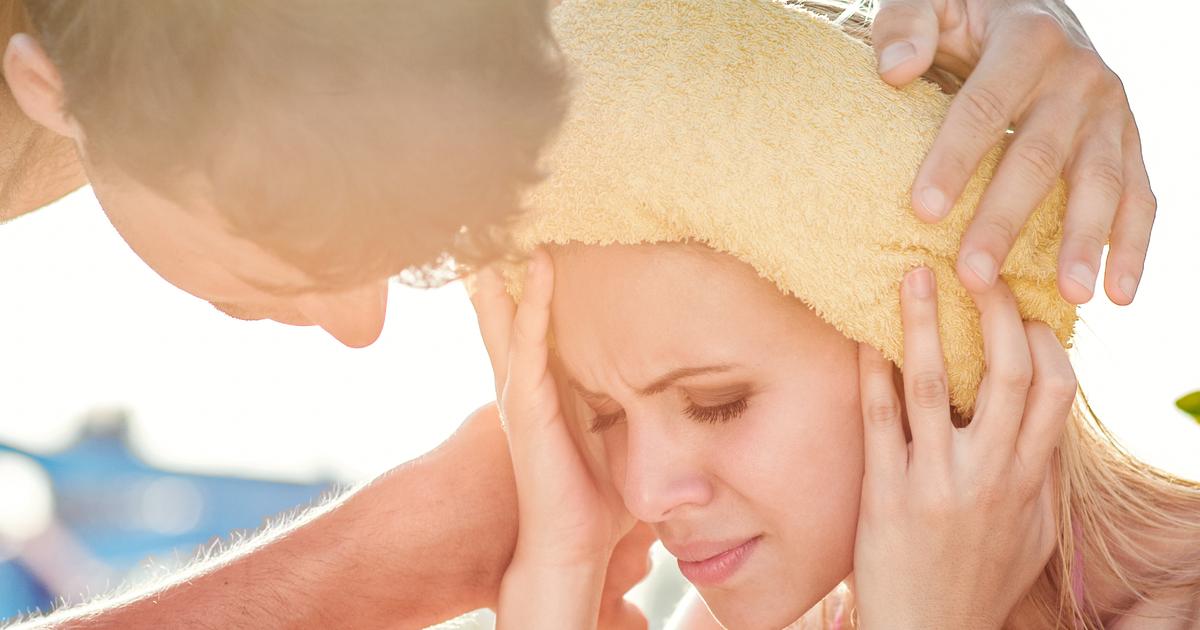Guide To Heat-Related Illnesses
There are several heat-related illnesses out there, and they vary in symptoms and severity. Some heat-related illnesses require immediate emergency medical attention, while others will resolve on their own with rest and hydration. Heat illnesses encompass any illness that occurs because the body overheats. Individuals are most likely to develop a heat-related illness when they are out in hot and humid conditions, especially if they're dehydrated or overexerting themselves. Many athletes experience some form of heat illness in the summer. The best way to avoid heat-related illnesses is by staying inside when it's dangerously hot, staying hydrated, and not working too hard in hot conditions. It's also helpful for individuals to know the symptoms of different conditions, so they are able to know if or when they need emergency medical care.
Heat Rash

A heat rash is a commonly-occurring condition that causes patches of skin to sting or prickle because they've become overheated. This condition isn't dangerous, but it can cause uncomfortable itching. Heat rashes look like small, raised bumps surrounded by reddened skin, and in most cases, the rash will develop on clothed portions of the individual's body like the armpits, groin, upper chest, back, neck, and abdomen. Rather than persisting for long periods, the rash will typically subside when the individual's skin becomes cooler. Most individuals experience this condition after being in humid, hot conditions. Infants most commonly develop it, though anyone can. There's also a higher chance of developing a heat rash for individuals who have a fever and are on bed rest, or for those who live a very active lifestyle.
Uncover details on the next heat-related illness now.
Heat Syncope

Heat syncope, otherwise known as heat fainting, is a heat illness that typically occurs when individuals overexert themselves in a hot climate. Though the symptoms may appear and feel alarming, this form of heat-related illness isn't generally dangerous. However, if it's paired with more dangerous symptoms, affected individuals should seek medical care. When an individual's body tries to cool itself down, it causes their blood vessels to dilate. Heat syncope occurs when an individual's blood pressure drops so much that there's reduced blood flow to their brain. Individuals are much more likely to develop heat syncope if they haven't been drinking enough water. Individuals experiencing heat syncope might feel faint, dizzy, restless, have a rapid heartbeat, feel pounding in their head, feel nauseous, vomit, or briefly lose consciousness. Those who experience any of these things should lie down in a cool area and drink salty fluids.
Keep reading to learn more about heat-related illnesses now.
Heat Stroke

Heat stroke is the most serious kind of heat-related illness and requires immediate emergency medical attention. If individuals don't treat heat stroke immediately, there could be damage to their muscles, kidneys, heart, and brain. This damage can be life-threatening or permanently disabling. Heat stroke occurs when an individual's body temperature rises to at least 104 degrees Fahrenheit. Some individual's temperature rises even higher. A 104 degrees Fahrenheit core body temperature is the main symptom of heat stroke. The condition can lead to multiple physical and neurological symptoms. For instance, patients may have altered behavior or an unusual mental state including slurred speech, confusion, irritability, agitation, delirium, and seizures. As symptoms progress, affected individuals may enter a coma. Patients with heat stroke often experience vomiting and nausea, a racing heart, flushed skin, rapid breathing, and a headache. It's important to call 911 if you think you or someone around you may be experiencing heat stroke.
Learn more about heat-related illnesses now.
Heat Exhaustion

Heat exhaustion isn't as immediately life-threatening as heat stroke, but it's still a serious illness that requires prompt medical treatment. The most dangerous thing about heat exhaustion is if it's not treated, it can lead to heat stroke. Strenuous physical activity and high temperatures can cause the condition, especially if they're combined with high levels of humidity. Individuals can prevent heat exhaustion by hydrating, resting, and paying attention to their body. If an individual thinks they have heat exhaustion, they should stop their physical activity immediately. Then, they should drink sports drinks or cool water and move into the shade or an air-conditioned area. Heat exhaustion presents with multiple symptoms including heavy sweating, cool skin with goosebumps, dizziness, faintness, weak and rapid pulse, fatigue, muscle cramps, headache, nausea, and a drop in blood pressure when standing.
Get more information on heat-related illnesses now.
Heat Cramps

Heat cramps are considered a heat-related illness because they usually occur in hot environments. However, the exact mechanism that causes them is unknown. An individual with heat cramps will experience brief and painful cramps in their muscles. These spasms might occur during exercise or work, or they may begin a few hours after the strenuous activity. It's most common for the cramps to affect muscles that have become tired due to heavy work, like the shoulders, thighs, and calves. Drinking large amounts of fluids with no salt can increase an individual's risk of this, since this causes them to lose fluid and become dehydrated. Individuals are also at an increased risk of this condition for the first few days after they begin new activities. Researchers believe heat cramps are related to electrolyte issues. Electrolytes are necessary for muscles to function properly, and if individual's don't have enough electrolytes because of dehydration, their muscles can cramp and spasm involuntarily.
